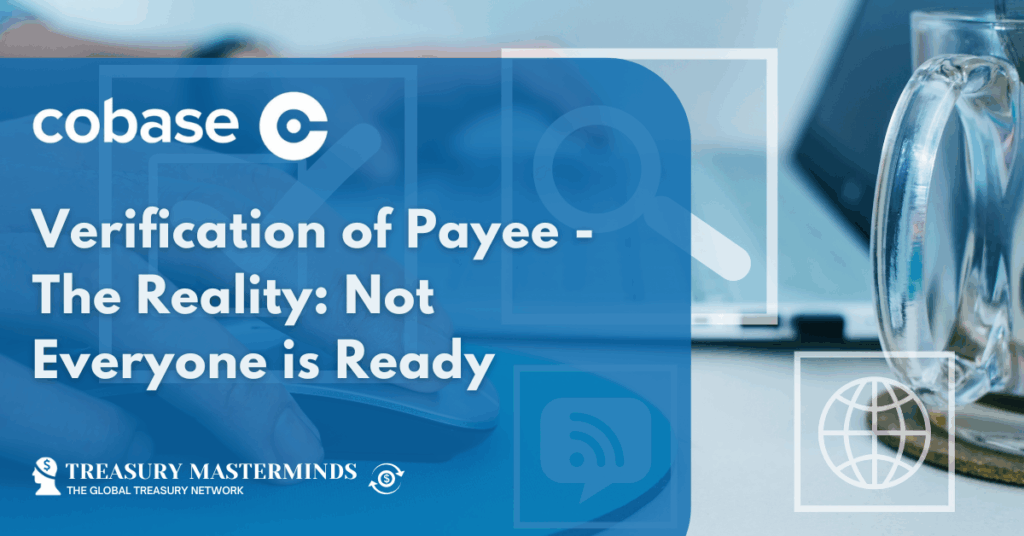
Building an Actionable Roadmap for Implementing AI in Treasury
From Treasury Masterminds Everyone talks about “AI in treasury” as if it’s a switch you can flip between coffee breaks. It’s not. It’s a journey that starts with structure, not software. Below is a simple, pragmatic roadmap to move from ideas to impact—without wasting six months in PowerPoint purgatory. 1. Define the Problem, Not the Tool Treasuries love tools. But AI is not a tool—it’s a means to solve a problem. Start by defining where you lose time, accuracy, or control today. Common use cases: Each of these can be linked to measurable outcomes (reduce forecast error by 20%, cut manual hours by 30%, etc.). That’s how you define “success” before the first algorithm is even considered. 2. Assess Your Data Reality AI feeds on clean, structured, and accessible data. Treasury data rarely fits that description.Ask yourself: Run a “data audit.” It’s the dullest but most crucial step. You can’t forecast tomorrow’s cash flow with confidence if half your data lives in inboxes. 3. Pick One Use Case and Prototype Fast Don’t aim to “implement AI.” Aim to pilot one AI-powered use case. Start where: Good first projects: Run it as a 6–8 week pilot with clear KPIs. Prove the concept, then expand. 4. Build a Cross-Functional Team AI projects fail when IT “owns it” or Treasury “outsources it.” They work when Finance, Treasury, Data Science, and IT collaborate.Define roles early: This is also where you establish AI ownership inside finance—so you don’t rely forever on external vendors. 5. Implement Governance and Controls AI doesn’t eliminate controls; it creates new ones.Treasury should define: Document decisions as you go. AI in treasury should improve transparency, not mystify it. 6. Educate and Upskill the Team The fastest way to kill innovation is to let people feel excluded from it. 7. Measure, Iterate, and Scale AI is not “done.” It learns—or dies.After the pilot: By this point, you should have an internal framework and the confidence to apply AI thinking to other areas—FX exposure management, investment optimization, or working capital analytics. 8. Communicate Results Most CFOs don’t care about models—they care about outcomes. Quantify: Share results internally. Celebrate small wins. It builds momentum for the next project and helps shift the narrative from “AI experiment” to “strategic advantage.” Final Thoughts An AI roadmap is not about chasing buzzwords—it’s about building digital muscle in treasury. The goal isn’t to have a “smart treasury.” The goal is to have a faster, more informed, less reactive one. Start small, stay practical, and keep humans in charge of the machines. That’s how AI stops being a headline and starts being a habit. Also Read Join our Treasury Community Treasury Mastermind is a community of professionals working in treasury management or those interested in learning more about various topics related to treasury management, including cash management, foreign exchange management, and payments. To register and connect with Treasury professionals, click [HERE] or fill out the form below to get more information. Notice: JavaScript is required for this content.

Verification of Payee – The Reality: Not Everyone is Ready
This article is written by Cobase The EU’s Instant Payments Regulation is reshaping the financial landscape at record speed. By late 2025, every bank and payment service provider in the eurozone must be able to receive instant payments, and by early 2026, they must be able to send them. On paper, this sounds like progress: faster, cheaper, safer payments for all. In practice, the rapid timeline is creating strain across the industry. The downside of forced adoption Not every player in the payments ecosystem is ready for this shift. Many banks still operate on legacy infrastructure, not built for real-time, round-the-clock processing. For them, upgrading systems to handle instant payments, fraud checks, and sanctions screening within seconds is a massive task. Vendors face a similar challenge. Some are rushing to bolt instant-payment functionality onto old platforms, creating patchwork solutions that may not scale or stand up to regulatory scrutiny. Corporates, meanwhile, are caught in the middle. Treasury teams must adapt their workflows, manage liquidity in real time, and—critically—ensure that their master data is accurate. The risk is clear: if corporates and banks aren’t fully prepared, they may be tempted to look for “opt-outs” or backdoors in the regulation to buy more time. But regulators have made it clear: there is no going back. Instant payments and Verification of Payee (VoP) are here to stay. Why verification of Payee is the pressure point The Regulation doesn’t just mandate instant payments—it makes Verification of Payee mandatory. That means before a transfer is processed, the account name must be checked against the IBAN, and mismatches must trigger a warning. This sounds simple, but the operational impact is huge: For banks and corporates, this is where the regulation bites hardest. Without strong VoP tools, the risk of fraud, error, or compliance failure grows. Why verification The regulation is coming fast, and not everyone is ready. But the answer isn’t to delay or to water down compliance. The answer is to adopt solutions that make instant payments both safe and sustainable. For corporates, this isn’t just about checking a regulatory box. It’s about safeguarding payroll, protecting supplier relationships, and keeping treasury operations running smoothly. For banks, it’s about maintaining customer trust in an environment where money moves in seconds. Cobase’s role is to provide the tools to make this transition possible—helping clients stay compliant, avoid backdoors, and operate securely in the new real-time payments world. Conclusion The pressure is real. The Instant Payments Regulation is forcing banks, vendors, and corporates to modernize faster than many expected. But cutting corners isn’t an option. With Verification of Payee built into every step of the payment process—master data, bulk files, single transfers, and address books—Cobase ensures clients stay both compliant and protected. Instant payments are becoming the standard. The real question is: will your systems, data, and processes be ready? With the right solutions, the answer can be yes—without compromise. Frequent Asked Questions (FAQs) 1. What is the Instant Payments Regulation? The Instant Payments regulation is new EU legislation that makes instant payments mandatory across the euro area. By late 2025, all banks and payment service providers holding euro accounts must be able to send and receive instant transfers 24/7. 2. Why were instant payments not widely available before? Although SEPA Instant Credit Transfers (SCT Inst) were introduced in 2017, participation was optional. Some banks adopted the scheme quickly, but many did not. As a result, instant payments were common in some countries but almost unavailable in others. 3. How does Verification of Payee (VoP) work? Verification of Payee checks whether the name of the beneficiary matches the IBAN before a transfer is processed. If there’s a mismatch, the sender is warned. This helps reduce fraud and prevents costly errors before the payment leaves the account. 4. What risks do corporates face with instant payments? Instant transfers are irreversible. Errors in supplier details, outdated employee data, or fraud attempts can cause money to be lost in seconds. Without accurate master data and fraud-prevention controls, corporates are more exposed to risk than with traditional, slower payments. 5. How should businesses prepare for instant payments? Corporates need to ensure their payment processes, ERP data, and fraud controls are ready for a real-time environment. This means cleaning up master data, implementing strong verification measures, and adopting technology that supports instant and secure payment flows. Also Read Join our Treasury Community Treasury Masterminds is a community of professionals working in treasury management or those interested in learning more about various topics related to treasury management, including cash management, foreign exchange management, and payments. To register and connect with Treasury professionals, click [HERE] or fill out the form below to get more information. Notice: JavaScript is required for this content.